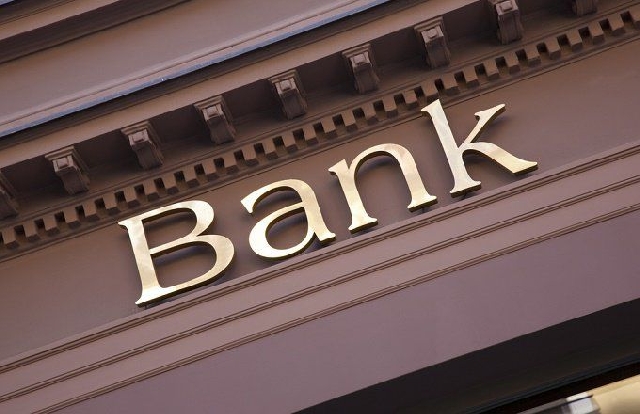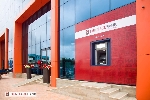Banking sector assets hit GH¢170.3bn – Ofori-Atta
 Local banks were forced to recapitalised in the first term of the Akufo-Addo government
Local banks were forced to recapitalised in the first term of the Akufo-Addo government
Ghana’s banking sector remains “well-capitalised, liquid, and profitable, backed by strong buffers to support the recovery process”, Finance Minister Ken Ofori-Atta has said.
Presenting the 2022 budget to parliament on Wednesday, 17 November 2022, Mr Ofori-Atta said: “Banks reported a strong balance sheet position as of end-September 2021, albeit with marginal declines in the annual growth rates of some key balance sheet indicators this year compared to the same period last year”.
The total assets of the banking industry, he noted, “increased by 16.9 per cent year-on-year to GH¢170.3 billion as of end-September 2021”.
“This represents a decline in growth from the 22.2 per cent in September 2020, attributed to the lingering impact of COVID-19”, he explained.
He reported that the year-to-date growth in assets of 14.0 per cent in 2021, however, “marginally exceeded the corresponding growth of 13.0 per cent in 2020, reflecting the gradual rebound in economic activities this year”.
Also, he said growth in investments “moderated” in September 2021, “as banks redirected a portion of additional liquidity flows into credit in the third quarter of 2021”.
Investments in bills and securities grew by 30.0 per cent year-on-year to GH¢81.2 billion as of end-September 2021 compared to a growth of 36.6 per cent in September 2020, he added.
Similarly, he continued, “year-to-date growth in Investments moderated to 26.1 per cent at the end of the third quarter of 2021 compared to a growth of 29.4 per cent in the same corresponding period last year. Investments, however, remained the largest component of banks’ assets with a share of 47.7 per cent as of end-September 2021”.
Additionally, he said banks reported a gradual rebound in credit growth in September 2021, in line with projections of a net-ease in the stance on loans to enterprises and households and an increase in credit demand, as reported during the August 2021 round of credit conditions survey.
“Gross loans and advances in the year-to-September 2021 increased by 4.8 per cent compared to a lower growth of 1.7 per cent in the corresponding period last year”, he mentioned, noting: “The annual growth rate of gross loans and advances, however, declined from 14.4 per cent to 9.0 per cent during the review period”.
“The industry continued to record strong and sustained growth in deposits attributed to liquidity flows within the domestic economy”.
“Deposits recorded a robust albeit lower growth of 16.4 per cent to GH¢113.8 billion as of end-September 2021, relative to the 23.8 per cent growth recorded a year earlier”.
“The COVID-19 fiscal stimulus packages, payments to contractors, SDI depositors, and clients of SEC-licensed fund managers, as well as increased savings by individuals and firms from the pandemic-induced slowdown in consumer and investment spending in some sectors, contributed to the observed growth in total deposits”.
Also, Mr Ofori-Atta said “the financial soundness indicators remained healthy in September 2021, reflecting robust solvency, liquidity, and profitability indicators”.
“The industry solvency position remained robust with a CAR of 19.9 per cent in September 2020, marginally lower than the CAR of 20.3 per cent in September 2020, reflecting the recent gradual rebound in credit. The CAR was, however, well above the regulatory minimum of 11.5 per cent, pointing to the ability of banks to further deepen intermediation and shows that banks have adequate buffers to moderate potential losses from such increased lending during the current uncertain operating environment”.
He said general repayment challenges associated with the COVID-19 pandemic, as well as some bank-specific challenges with recoveries on the loan portfolio, contributed to a “marginal” increase in the NPL ratio from 15.8 per cent in September 2020 to 16.8 per cent in September 2021.
This was attributed to the combined effect of an increase in the stock of NPLs by 16.4 per cent to GH¢8.4 billion, as well as a modest growth in the stock of gross loans by 9.0 per cent over the period.
The adjusted NPL ratio (excluding the fully provisioned loan loss category), however, improved from 6.7 per cent to 6.5 per cent over the review period.
The industry’s profitability performance, he added, remained robust but represented a moderation in September 2021 compared with the same period last year.
Profit-after-tax growth for the first three quarters of the year compared to the same period last year moderated from 22.0 per cent to 18.9 per cent on account of a moderation in the growth of banks’ net interest income from 20.0 per cent to 18.2 per cent.
“This was on the back of higher growth in interest expenses during the review period (from 8.1 per cent to 15.9 per cent), which partially offset the increase in banks’ interest income (from 16.0 per cent to 17.5 per cent)”.
Furthermore, he said growth in operating expenses was marginally lower at 10.3 per cent in September 2021 relative to the 10.4 per cent growth a year earlier, reflecting the sustained cost minimisation strategies of banks.
“Despite the moderation in profit growth, the sector’s profitability indicators improved during the review period, reflecting the moderation in growth in assets and equity. Banks’ Return on Assets (ROA) improved to 4.6 per cent from 4.2 per cent while Return on Equity (ROE) increased barely marginally to 21.1 per cent in September 2021 from 21.0 per cent September in August 2020”.
“The assessment indicates that the banking sector remains strong, with key financial indicators pointing to a solvent, liquid, and profitable sector. Banks also continue to hold adequate buffers to moderate any credit and liquidity shocks”.
“Mr Speaker, in summary, the regulatory reforms embarked on during 2017-2019 strengthened the banking sector and cushioned it from the severe effects of the COVID-19 pandemic. Additionally, the policy support and regulatory reliefs put in place at the height of the pandemic also contributed positively to the sector’s performance. The banking sector, therefore, continues to improve and remains resilient with strong capital buffers to withstand shocks and support the nation’s continued recovery from the shackles of the COVID-19 pandemic”.
Source: classfmonline.com
Trending Business

Gov't owes Zoomlion GHC1.2 billion for unpaid waste management services – Minister Reveals
15:33
President Mahama assents to amended bills to abolish Betting Tax, E-Levy and Emissions Tax
14:43
Clean Jobs Resources Limited denies involvement in illegal mining activities
12:19
Brigadier General Glover Annan Ashong takes office as new Customs Commissioner
11:20
Gov’t must be deliberate in empowering businesspeople – Seidu Agongo
19:57
Ghana’s development hinges on political-business collaboration – Seidu Agongo
19:47
Agongo urges business leaders to mentor 300 youngsters each for Ghana’s future
21:40
Jospong Group partner with Austria to boost waste-to-energy and skills training
16:49
Bank loans: 35% interest rate senseless – Agongo says Heritage Bank would’ve charged 20% to force low rates
13:23
‘Ofori-Atta promised to do his best to protect my bank but still collapsed it’ – Agongo
10:53




